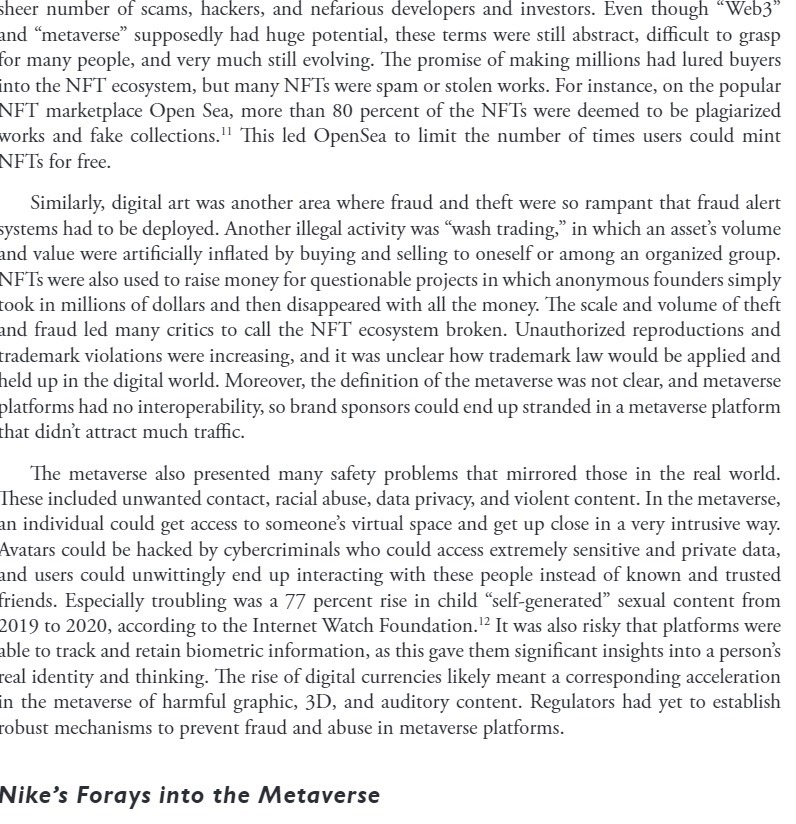sheer number of scams, hackers, and nefarious developers and investors. Even though \"Web\" and \"metaverse\" supposedly had huge potential, these terms were still abstract, difcult to grasp for many people, and very much still evolving. The promise of making millions had lured buyers into the NET ecosystem, but many NFTs were spam or stolen works. For instance, on the popular NFT marketplace Open Sea, more than 3!] percent of the NFTs were deemed to be plagiarized works and fake collections.11 This led OpenSea to limit the number of times users could mint NFTs for free. Similarly, digital art was another area where fraud and theft were so rampant that 'aud alert systems had to be deployed. Another illegal activity was \"wash trading,\" in which an asset's volume and value were articially inflated by buying and selling to oneself or among an organized group. NFTs were also used to raise money for questionable projects in which anonymous founders simply took in millions of dollars and then disappeared with all the money. The stale and volume of theft and fraud led many critics to call the NET ecosystem broken. Unauthorized reproductions and trademark violations were increasing, and it was unclear how trademark law would be applied and held up in the digital world. Moreover, the denition of the metaverse was not clear, and metaverse platforms had no interoperability, so brand sponsors could end up stranded in a metaverse platform that didn't attract much trafc. The metaverse also presented many safety problems that mirrored those in the real world. These included unwanted contact, racial abuse, data privacy, and violent content. In the metaverse, an individual could get access to someone's virtual space and get up close in a very intrusive way. Avatars could be hacked by cybercriminals who could access extremely sensitive and private data, and users could unwittingly end up interacting with these people instead of known and trusted friends. Especially troubling was a F? percent rise in child \"self-generated\" sexual content from 2019 to 2020, according to the Internet 1lWatch Foundation. '2 It was also risky that platforms were able to track and retain biometric information, as this gave them signicant insights into a person's real identity and thinking. The rise of digital currencies likely meant a corresponding acceleration in the metaverse of harmful graphic, 3D, and auditory content. Regulators had yet to establish robust mechanisms to prevent fraud and abuse in metaverse platforms. Nike's Forays into the Metaverse







